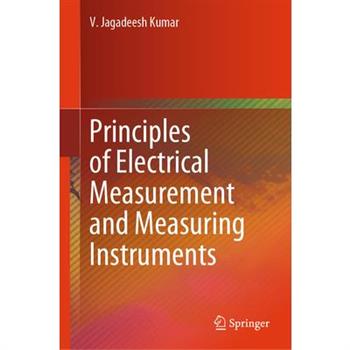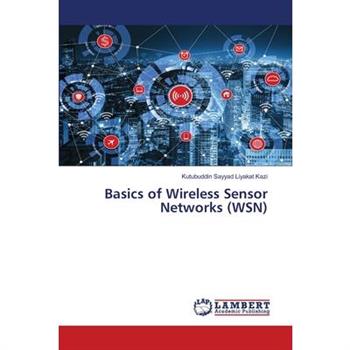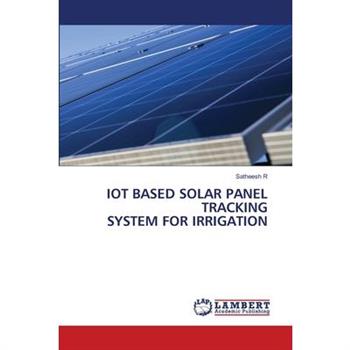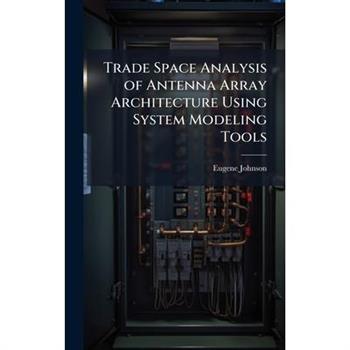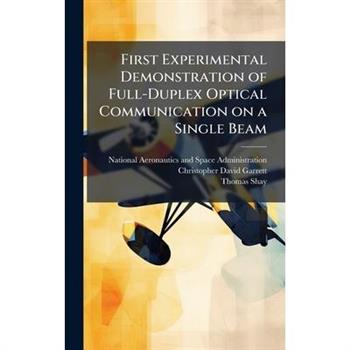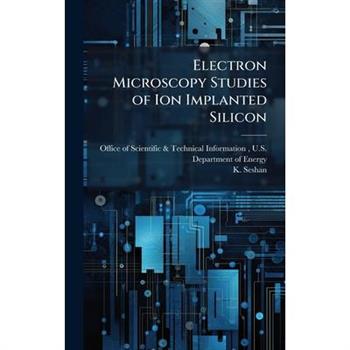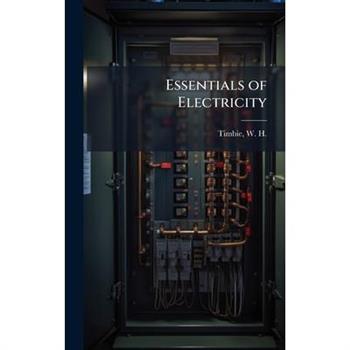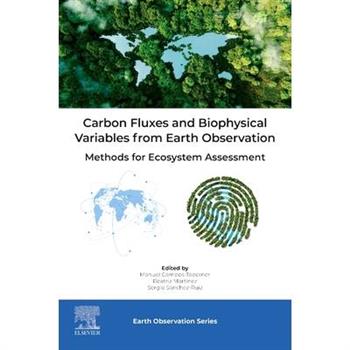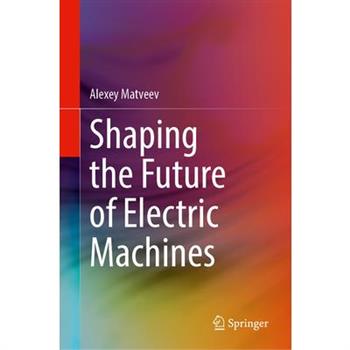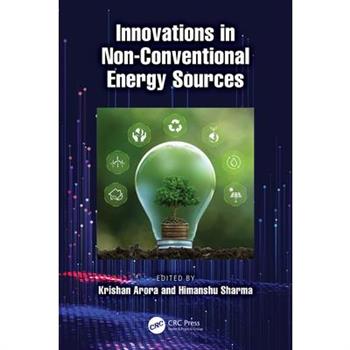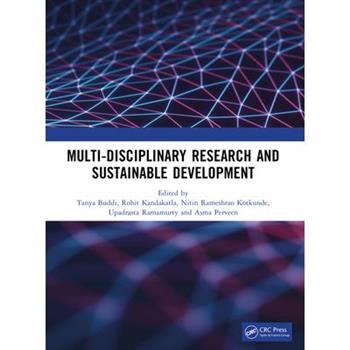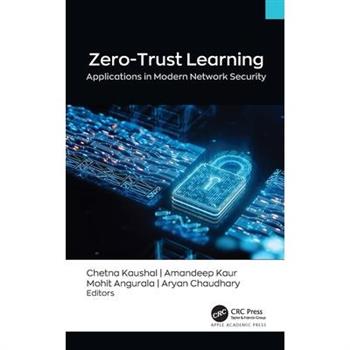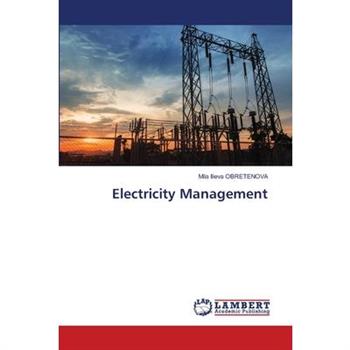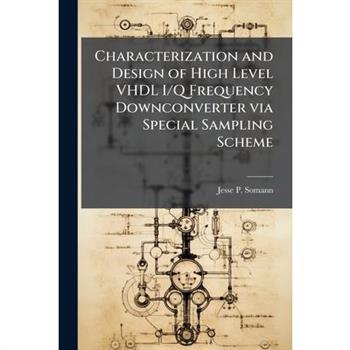Principles of Electrical Measurement and Measuring Instruments
Mechanical and Manufacturing Design of Antennas
Iterative Adaptive Dynamic Program Self-Learn Optimal Contro
This unique book introduces the iterative adaptive dynamic programming theory from the control systems perspectives, with the most recent results of iterative adaptive dynamic programming methods. Advanced theoretical analysis and some practical applications of iterative adaptive dynamic programming are provided. Furthermore, the practical applications in residential energy systems are also highlighted, showing the good performance of the iterative adaptive dynamic programming methods.The useful reference text benefits professionals, researchers, academics, graduate and undergraduates students in control engineering.
Generalized Homogeneity in Systems and Control Volume I
This book is an introduction to the theory of homogeneous systems, useful for the simplification of many types of nonlinear control problems. It propounds methods that can be employed when linearization proves unsuitable and provides a unified approach to stability and robustness analysis, control and observer design, and system discretization. The second edition splits the coverage of homogeneity, allowing expanded coverage of finite-dimensional systems (in this book) and infinite-dimensional systems (in Volume II). The results are better systematized and easier for readers to study and assimilate. The first volume details the concepts of finite-time and fixed-time stability. Key features of the book include: mathematical models of dynamical systems in finite-dimensional spaces; the theory of linear dilations in Euclidean spaces; homogeneous control and estimation; extensively expanded and original chapters with entirely new treatments of digitization, safety-critical systems, neural networks, and multiagent control; simple methods for an upgrade of existing linear control laws; numerical schemes for a consistent digital implementation of homogeneous algorithms; and experimental results that confirm an improvement of PID controllers. Illustrative examples--numerical results, computer simulations, and real experiments--support all the theoretical material. The coverage of finite-dimensional systems presented in this book is of interest to graduate students of control theory from engineering and applied-mathematical backgrounds and to practising control engineers.
Artificial Intelligence and Machine Learning Algorithms for Engineering Applications
This book comprehensively covers core algorithms and techniques used in artificial intelligence (AI) and machine learning (ML) for engineering applications. It further explores the use of AI in civil and structural engineering, quality control, and product design.Features: Presents autonomous robots using onboard computing and artificial intelligence (AI) algorithms to process the data from their sensors and make real-time decisions Discusses nature-based optimization-based computing techniques to enhance the computational speed for solving engineering problems Provides conceptual and practical knowledge about the design of modern computation techniques with advanced tools and methodologies Highlights the importance of using smart techniques including AI and ML in product design and development Covers time series analysis and forecasting in engineering, robotic process automation, and autonomous robots in manufacturing The text is primarily written for senior undergraduates, graduate students, and academic researchers in the fields of electrical engineering, electronics and communications engineering, computer science and engineering, manufacturing engineering, and environmental engineering.
Towards Unmanned Surface Vehicles
Towards Unmanned Surface Vehicles: Methods and Practices presents the latest overview, methodologies, design practices, and applications of unmanned surface vehicles (USVs).The authors introduce advanced theories and algorithms for the analysis and design of a maritime unmanned surface vehicle system, covering the sensing, path following, navigation, and control of the ocean surface environment. They demonstrate the architectural design, implementation, and field testing of USVs as well as key applications, such as hostile military scenarios, scientific oceanographic observation, and intelligent waterborne transportation. In addition, they address the open challenges in the field and propose the corresponding future perspectives.The book will appeal to researchers, graduate students, and engineers interested in USVs.
Basics of Wireless Sensor Networks (WSN)
Iot Based Solar Panel Tracking System for Irrigation
Trade Space Analysis of Antenna Array Architecture Using System Modeling Tools
This trade study has two objectives. The first provides a trade space analysis of differing array architectures and associated radio frequency components using system-modeling tools. The second objective develops system modeling tools aiding similar analysis by other users. These objectives were accomplished by evaluating a selected group of output parameters to include overall system cost, mass, and power consumption, as well as the minimum detectable input level, system spurious free dynamic range, and selected beam spoilage parameters caused by the use of discrete phase shifters. A fixed number of designs were evaluated using simulation. The evaluation process examined input parameter and design impact on the output parameters and overall best design. The best overall design, by score, performed exceptionally well for minimum detectable input level and beam spoilage parameters, very well for cost and power performance, and poor for total mass and spurious free dynamic range.This work has been selected by scholars as being culturally important, and is part of the knowledge base of civilization as we know it. This work was reproduced from the original artifact, and remains as true to the original work as possible. Therefore, you will see the original copyright references, library stamps (as most of these works have been housed in our most important libraries around the world), and other notations in the work.This work is in the public domain in the United States of America, and possibly other nations. Within the United States, you may freely copy and distribute this work, as no entity (individual or corporate) has a copyright on the body of the work.As a reproduction of a historical artifact, this work may contain missing or blurred pages, poor pictures, errant marks, etc. Scholars believe, and we concur, that this work is important enough to be preserved, reproduced, and made generally available to the public. We appreciate your support of the preservation process, and thank you for being an important part of keeping this knowledge alive and relevant.
First Experimental Demonstration of Full-Duplex Optical Communication on a Single Beam
The satellite industry is driven by the need to reduce costs. One way they have sought to do this is by reducing the size and weight of the satellite because of the extremely high cost per kilogram incurred launching a payload into orbit. The main difficulty in this approach is the lack of power capacity in a small satellite. One of the largest loads on a satellite's power system is the communications system. This has driven the need for a low-power communications system. This document examines a novel method of communicating optically with a low-Earth-orbit satellite from the ground without the need for a laser on the payload. The goal is to show the feasibility of such a system as a solution to the small satellite low-powered communication problem. Specially, that the system described herein: is capable of ground to low-Earth-orbit communications, has very little space-borne mass, and draws little power from the satellite. First, the system (hereafter referred to as LOWCAL "Lightweight Optical Wavelength Communication without A Laser in space") will be explained with details of the formats used and the link budgets. Discussions will be presented on the development of some of the system hardware (the laser diode driver, liquid crystal driver, and decision electronics for both the up and down links.) Finally, experimental test results of the entire system operating in a laboratory environment are presented and compared to theory. The results of the laboratory experiment support the original thesis: retro-modulated optical communications can meet the needs of the small satellite community. The system is capable of 10-kbps communication, has low space-borne mass, and draws little power from the satellite (less than 100-mW measured for the laboratory experiment, less than 1.5-W calculated for the Shuttle experiment).This work has been selected by scholars as being culturally important, and is part of the knowledge base of civilization as we know it. This work was reproduced from the original artifact, and remains as true to the original work as possible. Therefore, you will see the original copyright references, library stamps (as most of these works have been housed in our most important libraries around the world), and other notations in the work.This work is in the public domain in the United States of America, and possibly other nations. Within the United States, you may freely copy and distribute this work, as no entity (individual or corporate) has a copyright on the body of the work.As a reproduction of a historical artifact, this work may contain missing or blurred pages, poor pictures, errant marks, etc. Scholars believe, and we concur, that this work is important enough to be preserved, reproduced, and made generally available to the public. We appreciate your support of the preservation process, and thank you for being an important part of keeping this knowledge alive and relevant.
Modern Electrical Construction; a Reliable, Practical Guide for the Beginner in Electrical Construction, Showing the Latest Approved Methods of Installing Work of All Kinds According to the Safety Rul
"Modern Electrical Construction" (1905) is a practical guide for beginners in electrical construction. This comprehensive volume details approved methods for installing various electrical systems, adhering to the safety regulations established by the National Board of Fire Underwriters. Written by Henry C. Horstmann and Victor Hugo Tousley, the book covers a wide array of topics, from basic wiring techniques to more complex installations. This historical text offers valuable insights into the early days of electrical standardization and safety practices, providing a fascinating glimpse into the evolution of electrical engineering. It remains relevant for anyone interested in the history of electrical work and the development of modern safety standards.This work has been selected by scholars as being culturally important, and is part of the knowledge base of civilization as we know it. This work was reproduced from the original artifact, and remains as true to the original work as possible. Therefore, you will see the original copyright references, library stamps (as most of these works have been housed in our most important libraries around the world), and other notations in the work.This work is in the public domain in the United States of America, and possibly other nations. Within the United States, you may freely copy and distribute this work, as no entity (individual or corporate) has a copyright on the body of the work.As a reproduction of a historical artifact, this work may contain missing or blurred pages, poor pictures, errant marks, etc. Scholars believe, and we concur, that this work is important enough to be preserved, reproduced, and made generally available to the public. We appreciate your support of the preservation process, and thank you for being an important part of keeping this knowledge alive and relevant.
Electron Microscopy Studies of Ion Implanted Silicon
The Office of Scientific & Technical Information (OSTI), is a part of the U.S. Department of Energy (DOE) that houses research and development results from projects funded by the DOE. The information is generally an article, technical document, conference paper or dissertation. This is one of those publications.This work has been selected by scholars as being culturally important, and is part of the knowledge base of civilization as we know it. This work was reproduced from the original artifact, and remains as true to the original work as possible. Therefore, you will see the original copyright references, library stamps (as most of these works have been housed in our most important libraries around the world), and other notations in the work.This work is in the public domain in the United States of America, and possibly other nations. Within the United States, you may freely copy and distribute this work, as no entity (individual or corporate) has a copyright on the body of the work.As a reproduction of a historical artifact, this work may contain missing or blurred pages, poor pictures, errant marks, etc. Scholars believe, and we concur, that this work is important enough to be preserved, reproduced, and made generally available to the public. We appreciate your support of the preservation process, and thank you for being an important part of keeping this knowledge alive and relevant.
Dynamic Electrothermal Model of a Sputtered Thermopile Thermal Radiation Detector for Earth Radiation Budget Applications
The Clouds and the Earth's Radiant Energy System (CERES) is a program sponsored by the National Aeronautics and Space Administration (NASA) aimed at evaluating the global energy balance. Current scanning radiometers used for CERES consist of thin-film thermistor bolometers viewing the Earth through a Cassegrain telescope. The Thermal Radiation Group, a laboratory in the Department of Mechanical Engineering at Virginia Polytechnic Institute and State University, is currently studying a new sensor concept to replace the current bolometer: a thermopile thermal radiation detector. This next-generation detector would consist of a thermal sensor array made of thermocouple junction pairs, or thermopiles. The objective of the current research is to perform a thermal analysis of the thermopile. Numerical thermal models are particularly suited to solve problems for which temperature is the dominant mechanism of the operation of the device (through the thermoelectric effect), as well as for complex geometries composed of numerous different materials. Feasibility and design specifications are studied by developing a dynamic electrothermal model of the thermopile using the finite element method. A commercial finite element-modeling package, ALGOR, is used.This work has been selected by scholars as being culturally important, and is part of the knowledge base of civilization as we know it. This work was reproduced from the original artifact, and remains as true to the original work as possible. Therefore, you will see the original copyright references, library stamps (as most of these works have been housed in our most important libraries around the world), and other notations in the work.This work is in the public domain in the United States of America, and possibly other nations. Within the United States, you may freely copy and distribute this work, as no entity (individual or corporate) has a copyright on the body of the work.As a reproduction of a historical artifact, this work may contain missing or blurred pages, poor pictures, errant marks, etc. Scholars believe, and we concur, that this work is important enough to be preserved, reproduced, and made generally available to the public. We appreciate your support of the preservation process, and thank you for being an important part of keeping this knowledge alive and relevant.
Essentials of Electricity
Essentials of Electricity: A Textbook for Wiremen and the Electrical Trades: Direct Currents, by W. H. Timbie, is a comprehensive guide originally published in 1913. Designed for students and practitioners alike, this volume offers a foundational understanding of direct current electricity. This meticulously crafted textbook covers essential principles and practical applications, making it an invaluable resource for those seeking to master the fundamentals of electrical work. The clear, accessible language and detailed explanations ensure that readers gain a solid grasp of the subject matter. Ideal for both self-study and classroom use, 'Essentials of Electricity' remains a relevant and insightful work for anyone involved in the electrical trades. This work has been selected by scholars as being culturally important, and is part of the knowledge base of civilization as we know it. This work was reproduced from the original artifact, and remains as true to the original work as possible. Therefore, you will see the original copyright references, library stamps (as most of these works have been housed in our most important libraries around the world), and other notations in the work.This work is in the public domain in the United States of America, and possibly other nations. Within the United States, you may freely copy and distribute this work, as no entity (individual or corporate) has a copyright on the body of the work.As a reproduction of a historical artifact, this work may contain missing or blurred pages, poor pictures, errant marks, etc. Scholars believe, and we concur, that this work is important enough to be preserved, reproduced, and made generally available to the public. We appreciate your support of the preservation process, and thank you for being an important part of keeping this knowledge alive and relevant.
First Experimental Demonstration of Full-Duplex Optical Communication on a Single Beam
The satellite industry is driven by the need to reduce costs. One way they have sought to do this is by reducing the size and weight of the satellite because of the extremely high cost per kilogram incurred launching a payload into orbit. The main difficulty in this approach is the lack of power capacity in a small satellite. One of the largest loads on a satellite's power system is the communications system. This has driven the need for a low-power communications system. This document examines a novel method of communicating optically with a low-Earth-orbit satellite from the ground without the need for a laser on the payload. The goal is to show the feasibility of such a system as a solution to the small satellite low-powered communication problem. Specially, that the system described herein: is capable of ground to low-Earth-orbit communications, has very little space-borne mass, and draws little power from the satellite. First, the system (hereafter referred to as LOWCAL "Lightweight Optical Wavelength Communication without A Laser in space") will be explained with details of the formats used and the link budgets. Discussions will be presented on the development of some of the system hardware (the laser diode driver, liquid crystal driver, and decision electronics for both the up and down links.) Finally, experimental test results of the entire system operating in a laboratory environment are presented and compared to theory. The results of the laboratory experiment support the original thesis: retro-modulated optical communications can meet the needs of the small satellite community. The system is capable of 10-kbps communication, has low space-borne mass, and draws little power from the satellite (less than 100-mW measured for the laboratory experiment, less than 1.5-W calculated for the Shuttle experiment).This work has been selected by scholars as being culturally important, and is part of the knowledge base of civilization as we know it. This work was reproduced from the original artifact, and remains as true to the original work as possible. Therefore, you will see the original copyright references, library stamps (as most of these works have been housed in our most important libraries around the world), and other notations in the work.This work is in the public domain in the United States of America, and possibly other nations. Within the United States, you may freely copy and distribute this work, as no entity (individual or corporate) has a copyright on the body of the work.As a reproduction of a historical artifact, this work may contain missing or blurred pages, poor pictures, errant marks, etc. Scholars believe, and we concur, that this work is important enough to be preserved, reproduced, and made generally available to the public. We appreciate your support of the preservation process, and thank you for being an important part of keeping this knowledge alive and relevant.
Methods to Create ArcMap?(R) Styles With Examples for Lithology and Time
ArcMap?(R) style files (.style extension) can be used to standardize map symbolization. This report describes the methods used to create several styles for lithology or geologic time. The styles are color fills which were created by assigning RGB color values to attributes of polygon shapefiles. The terms symbolized were either generated from terminology hierarchies from various sources or digitized from scanned images of existing legends. For large lithology lists, a table format was used as a convenient method for experimenting with shades of color as well as for documenting the RGB color values. Examples of styles were adapted or created from the following legends: the International Stratigraphic Chart (ISC) and the USGS Color Code version of the ISC; the Decade of North American Geology (DNAG-1983 Geologic Time Scale); the North American Geologic Map Data Model version 4.3 (specifically lithclass 4.3 and its successors lithclass 6.1 and lithclass 6.2); and the State Geologic Map Compilation (SGMC). The digital package consists of ArcMap?(R) styles, and Microsoft?(R) Excel color documentation tables. The software used includes Environmental Systems Research Institute (ESRI?(R)) ArcGIS?(R) version 9 (ArcMap?(R) module) and Microsoft?(R) Excel 2003. Other software tools used in preparing the files were Pixie color-picker, and the Science Language Interface Module.This work has been selected by scholars as being culturally important, and is part of the knowledge base of civilization as we know it. This work was reproduced from the original artifact, and remains as true to the original work as possible. Therefore, you will see the original copyright references, library stamps (as most of these works have been housed in our most important libraries around the world), and other notations in the work.This work is in the public domain in the United States of America, and possibly other nations. Within the United States, you may freely copy and distribute this work, as no entity (individual or corporate) has a copyright on the body of the work.As a reproduction of a historical artifact, this work may contain missing or blurred pages, poor pictures, errant marks, etc. Scholars believe, and we concur, that this work is important enough to be preserved, reproduced, and made generally available to the public. We appreciate your support of the preservation process, and thank you for being an important part of keeping this knowledge alive and relevant.
Moore's Law and the Semiconductor Industry
Dale Jorgenson's Presidential address to the American Economic Association (2001) makes a convincing case that accelerated technological change in the production of semiconductors, microprocessors in particular, has driven the recentincreased productivity growth in the U.S. economy. But, while semiconductors now 簿竅 gure prominently in accounts of economic growth, Jorgenson points out that there is not a fully satisfactory economic model of the industry that produces them. This paper is our attempt to rise to Jorgenson's challenge.This work has been selected by scholars as being culturally important, and is part of the knowledge base of civilization as we know it. This work was reproduced from the original artifact, and remains as true to the original work as possible. Therefore, you will see the original copyright references, library stamps (as most of these works have been housed in our most important libraries around the world), and other notations in the work.This work is in the public domain in the United States of America, and possibly other nations. Within the United States, you may freely copy and distribute this work, as no entity (individual or corporate) has a copyright on the body of the work.As a reproduction of a historical artifact, this work may contain missing or blurred pages, poor pictures, errant marks, etc. Scholars believe, and we concur, that this work is important enough to be preserved, reproduced, and made generally available to the public. We appreciate your support of the preservation process, and thank you for being an important part of keeping this knowledge alive and relevant.
Modern Electrical Construction; a Reliable, Practical Guide for the Beginner in Electrical Construction, Showing the Latest Approved Methods of Installing Work of All Kinds According to the Safety Rul
"Modern Electrical Construction" (1905) is a practical guide for beginners in electrical construction. This comprehensive volume details approved methods for installing various electrical systems, adhering to the safety regulations established by the National Board of Fire Underwriters. Written by Henry C. Horstmann and Victor Hugo Tousley, the book covers a wide array of topics, from basic wiring techniques to more complex installations. This historical text offers valuable insights into the early days of electrical standardization and safety practices, providing a fascinating glimpse into the evolution of electrical engineering. It remains relevant for anyone interested in the history of electrical work and the development of modern safety standards.This work has been selected by scholars as being culturally important, and is part of the knowledge base of civilization as we know it. This work was reproduced from the original artifact, and remains as true to the original work as possible. Therefore, you will see the original copyright references, library stamps (as most of these works have been housed in our most important libraries around the world), and other notations in the work.This work is in the public domain in the United States of America, and possibly other nations. Within the United States, you may freely copy and distribute this work, as no entity (individual or corporate) has a copyright on the body of the work.As a reproduction of a historical artifact, this work may contain missing or blurred pages, poor pictures, errant marks, etc. Scholars believe, and we concur, that this work is important enough to be preserved, reproduced, and made generally available to the public. We appreciate your support of the preservation process, and thank you for being an important part of keeping this knowledge alive and relevant.
Moore's Law and the Semiconductor Industry
Dale Jorgenson's Presidential address to the American Economic Association (2001) makes a convincing case that accelerated technological change in the production of semiconductors, microprocessors in particular, has driven the recentincreased productivity growth in the U.S. economy. But, while semiconductors now 簿竅 gure prominently in accounts of economic growth, Jorgenson points out that there is not a fully satisfactory economic model of the industry that produces them. This paper is our attempt to rise to Jorgenson's challenge.This work has been selected by scholars as being culturally important, and is part of the knowledge base of civilization as we know it. This work was reproduced from the original artifact, and remains as true to the original work as possible. Therefore, you will see the original copyright references, library stamps (as most of these works have been housed in our most important libraries around the world), and other notations in the work.This work is in the public domain in the United States of America, and possibly other nations. Within the United States, you may freely copy and distribute this work, as no entity (individual or corporate) has a copyright on the body of the work.As a reproduction of a historical artifact, this work may contain missing or blurred pages, poor pictures, errant marks, etc. Scholars believe, and we concur, that this work is important enough to be preserved, reproduced, and made generally available to the public. We appreciate your support of the preservation process, and thank you for being an important part of keeping this knowledge alive and relevant.
A Nonlinear Digital Control Solution for a DC/DC Power Converter
A digital Nonlinear Proportional-Integral-Derivative (NPID) control algorithm was proposed to control a 1-kW, PWM, DC/DC, switching power converter. The NPID methodology is introduced and a practical hardware control solution is obtained. The design of the controller was completed using Matlab (trademark) Simulink, while the hardware-in-the-loop testing was performed using both the dSPACE (trademark) rapid prototyping system, and a stand-alone Texas Instruments (trademark) Digital Signal Processor (DSP)-based system. The final Nonlinear digital control algorithm was implemented and tested using the ED408043-1 Westinghouse DC-DC switching power converter. The NPID test results are discussed and compared to the results of a standard Proportional-Integral (PI) controller.This work has been selected by scholars as being culturally important, and is part of the knowledge base of civilization as we know it. This work was reproduced from the original artifact, and remains as true to the original work as possible. Therefore, you will see the original copyright references, library stamps (as most of these works have been housed in our most important libraries around the world), and other notations in the work.This work is in the public domain in the United States of America, and possibly other nations. Within the United States, you may freely copy and distribute this work, as no entity (individual or corporate) has a copyright on the body of the work.As a reproduction of a historical artifact, this work may contain missing or blurred pages, poor pictures, errant marks, etc. Scholars believe, and we concur, that this work is important enough to be preserved, reproduced, and made generally available to the public. We appreciate your support of the preservation process, and thank you for being an important part of keeping this knowledge alive and relevant.
Electron Microscopy Studies of Ion Implanted Silicon
The Office of Scientific & Technical Information (OSTI), is a part of the U.S. Department of Energy (DOE) that houses research and development results from projects funded by the DOE. The information is generally an article, technical document, conference paper or dissertation. This is one of those publications.This work has been selected by scholars as being culturally important, and is part of the knowledge base of civilization as we know it. This work was reproduced from the original artifact, and remains as true to the original work as possible. Therefore, you will see the original copyright references, library stamps (as most of these works have been housed in our most important libraries around the world), and other notations in the work.This work is in the public domain in the United States of America, and possibly other nations. Within the United States, you may freely copy and distribute this work, as no entity (individual or corporate) has a copyright on the body of the work.As a reproduction of a historical artifact, this work may contain missing or blurred pages, poor pictures, errant marks, etc. Scholars believe, and we concur, that this work is important enough to be preserved, reproduced, and made generally available to the public. We appreciate your support of the preservation process, and thank you for being an important part of keeping this knowledge alive and relevant.
Experiments in Nonlinear Adaptive Control of Multi-Manipulator, Free-Flying Space Robots
Sophisticated robots can greatly enhance the role of humans in space by relieving astronauts of low level, tedious assembly and maintenance chores and allowing them to concentrate on higher level tasks. Robots and astronauts can work together efficiently, as a team; but the robot must be capable of accomplishing complex operations and yet be easy to use. Multiple cooperating manipulators are essential to dexterity and can broaden greatly the types of activities the robot can achieve; adding adaptive control can ease greatly robot usage by allowing the robot to change its own controller actions, without human intervention, in response to changes in its environment. Previous work in the Aerospace Robotics Laboratory (ARL) have shown the usefulness of a space robot with cooperating manipulators. The research presented in this dissertation extends that work by adding adaptive control. To help achieve this high level of robot sophistication, this research made several advances to the field of nonlinear adaptive control of robotic systems. A nonlinear adaptive control algorithm developed originally for control of robots, but requiring joint positions as inputs, was extended here to handle the much more general case of manipulator endpoint-position commands. A new system modelling technique, called system concatenation was developed to simplify the generation of a system model for complicated systems, such as a free-flying multiple-manipulator robot system. Finally, the task-space concept was introduced wherein the operator's inputs specify only the robot's task. The robot's subsequent autonomous performance of each task still involves, of course, endpoint positions and joint configurations as subsets. The combination of these developments resulted in a new adaptive control framework that is capable of continuously providing full adaptation capability to the complex space-robot system in all modes of operation.This work has been selected by scholars as being culturally important, and is part of the knowledge base of civilization as we know it. This work was reproduced from the original artifact, and remains as true to the original work as possible. Therefore, you will see the original copyright references, library stamps (as most of these works have been housed in our most important libraries around the world), and other notations in the work.This work is in the public domain in the United States of America, and possibly other nations. Within the United States, you may freely copy and distribute this work, as no entity (individual or corporate) has a copyright on the body of the work.As a reproduction of a historical artifact, this work may contain missing or blurred pages, poor pictures, errant marks, etc. Scholars believe, and we concur, that this work is important enough to be preserved, reproduced, and made generally available to the public. We appreciate your support of the preservation process, and thank you for being an important part of keeping this knowledge alive and relevant.
Essentials of Electricity
Essentials of Electricity: A Textbook for Wiremen and the Electrical Trades: Direct Currents, by W. H. Timbie, is a comprehensive guide originally published in 1913. Designed for students and practitioners alike, this volume offers a foundational understanding of direct current electricity. This meticulously crafted textbook covers essential principles and practical applications, making it an invaluable resource for those seeking to master the fundamentals of electrical work. The clear, accessible language and detailed explanations ensure that readers gain a solid grasp of the subject matter. Ideal for both self-study and classroom use, 'Essentials of Electricity' remains a relevant and insightful work for anyone involved in the electrical trades. This work has been selected by scholars as being culturally important, and is part of the knowledge base of civilization as we know it. This work was reproduced from the original artifact, and remains as true to the original work as possible. Therefore, you will see the original copyright references, library stamps (as most of these works have been housed in our most important libraries around the world), and other notations in the work.This work is in the public domain in the United States of America, and possibly other nations. Within the United States, you may freely copy and distribute this work, as no entity (individual or corporate) has a copyright on the body of the work.As a reproduction of a historical artifact, this work may contain missing or blurred pages, poor pictures, errant marks, etc. Scholars believe, and we concur, that this work is important enough to be preserved, reproduced, and made generally available to the public. We appreciate your support of the preservation process, and thank you for being an important part of keeping this knowledge alive and relevant.
Methods to Create ArcMap?(R) Styles With Examples for Lithology and Time
ArcMap?(R) style files (.style extension) can be used to standardize map symbolization. This report describes the methods used to create several styles for lithology or geologic time. The styles are color fills which were created by assigning RGB color values to attributes of polygon shapefiles. The terms symbolized were either generated from terminology hierarchies from various sources or digitized from scanned images of existing legends. For large lithology lists, a table format was used as a convenient method for experimenting with shades of color as well as for documenting the RGB color values. Examples of styles were adapted or created from the following legends: the International Stratigraphic Chart (ISC) and the USGS Color Code version of the ISC; the Decade of North American Geology (DNAG-1983 Geologic Time Scale); the North American Geologic Map Data Model version 4.3 (specifically lithclass 4.3 and its successors lithclass 6.1 and lithclass 6.2); and the State Geologic Map Compilation (SGMC). The digital package consists of ArcMap?(R) styles, and Microsoft?(R) Excel color documentation tables. The software used includes Environmental Systems Research Institute (ESRI?(R)) ArcGIS?(R) version 9 (ArcMap?(R) module) and Microsoft?(R) Excel 2003. Other software tools used in preparing the files were Pixie color-picker, and the Science Language Interface Module.This work has been selected by scholars as being culturally important, and is part of the knowledge base of civilization as we know it. This work was reproduced from the original artifact, and remains as true to the original work as possible. Therefore, you will see the original copyright references, library stamps (as most of these works have been housed in our most important libraries around the world), and other notations in the work.This work is in the public domain in the United States of America, and possibly other nations. Within the United States, you may freely copy and distribute this work, as no entity (individual or corporate) has a copyright on the body of the work.As a reproduction of a historical artifact, this work may contain missing or blurred pages, poor pictures, errant marks, etc. Scholars believe, and we concur, that this work is important enough to be preserved, reproduced, and made generally available to the public. We appreciate your support of the preservation process, and thank you for being an important part of keeping this knowledge alive and relevant.
Carbon Fluxes and Biophysical Variables from Earth Observation
Carbon Fluxes and Biophysical Variables from Earth Observation: Methods for Ecosystem Assessment transforms the way remote sensing data can be used to approach monitoring of carbon fluxes (CF) and biophysical variables (BV) in ecosystem and global vegetation monitoring. In a field where these two subjects have traditionally been treated as distinct entities, this book offers an integrated exploration of CF and BV retrieval through remote sensing. It not only delves into a wide array of approaches and methodologies but also assists readers in selecting the most suitable models based on available inputs and spatiotemporal scales. Carbon Fluxes and Biophysical Variables from Earth Observation is a useful resource for Earth Observation specialists, particularly in Remote Sensing, machine learning, ecology, and plant physiology, to enhance and adapt their approaches and methodologies.
Shaping the Future of Electric Machines
Shaping the Future of Electric Machines is aimed at anyone involved with electric machines, drives, their applications, and related systems. This includes specialists in companies involved in the development or implementation of equipment, as well as students, professors, inventors and philosophers of technology. The content of the book is easy to master and is written in simple language without the use of complex mathematics. Despite its accessibility, the book provides new knowledge and offers a fresh perspective on electromechanics. It enables readers to understand their role in the evolution of electric machines and provides tools for shaping the future. The book also includes numerous examples of innovative solutions in the field of electric machines and drives, which serve as illustrations of various technical problem-solving approaches. Enables readers to understand the evolution of electric machines and offers tools for future design and innovation; Introduces several new concepts that challenge traditional views; Includes examples and illustrations of various technical problem-solving approaches.
Photocatalysis Approach for Environmental Applications
Currently, many of the technological advances around the world are limited by the lack of understanding about materials science and its applications. Beginning researchers in materials sciences worldwide have had great difficulty developing their research. This book is aimed at undergraduate students and researchers in materials sciences. It aims to provide a greater understanding of the potential of semiconductor materials for environmental applications such as renewable energy, energy storage systems, and remediation of degraded environments.
Innovations in Non-Conventional Energy Sources
This book focuses on exploring and showcasing advancements, breakthroughs, and emerging technologies in the field of energy generation and utilization, particularly those related to non-conventional or alternative energy sources. It delves into various non-conventional energy sources such as solar, wind, geothermal, tidal, and biomass and aims to provide in-depth insights into the technologies associated with these sources. It discusses innovative approaches, recent developments, and technological breakthroughs within the realm of non-conventional energy sources, addressing the environmental benefits of these energies while highlighting their potential to reduce greenhouse gas emissions, combat climate change, and promote sustainable energy practices. This book: Provides real-world examples and case studies of successful non-conventional energy projects Takes an interdisciplinary approach by integrating knowledge from various fields such as engineering, environmental science, economics, and policy, offering a holistic understanding of the subject Emphasizes the environmental benefits of non-conventional energy sources and their contributions to reducing carbon emissions and combating climate change Discusses the policies, regulations, and government incentives that influence the adoption of non-conventional energy sources, explaining how these factors can drive innovation Includes a global perspective by showcasing innovations and projects from different regions and highlighting how various countries are approaching renewable energy It serves as a comprehensive resource for researchers, professionals, policymakers, and anyone interested in understanding the latest innovations and trends in the field of non-conventional energy sources, with an emphasis on sustainability, environmental responsibility, and energy security.
Multi-Disciplinary Research and Sustainable Development
The Proceedings of the 2nd International Conference on Multi-Disciplinary Research and Sustainable Development.
Zero-Trust Learning
In this internet age of security challenges and threats from cybercrime, enhanced security measures are necessary. The zero trust model--the IT security model that requires strict identity verification for every person and device trying to access resources on a private network--helps to meet these everincreasing and evolving security challenges. This new volume offers a comprehensive overview of the zero trust security model and its application in the field of cybersecurity, covering the principles, technologies, and best practices for implementing a zero trust approach, equipping readers with the knowledge and tools to secure their digital environments effectively. This book stands out by providing a holistic view of the zero trust security model, combining practical guidance for professionals with educational insights for both professionals and students and offering real-world examples and case studies that bridge the gap between learning and implementation.
Photonic Sensors for Biomedical Applications
Photonic sensors are the most promising and rapidly advancing areas of photonics today, with applications in healthcare, environmental monitoring, and industrial applications. This new book provides an overview of a wide range of new and innovative technologies and current applications of photonic sensors for biomedical applications. Beginning with an overview of basic elements that make up the photonic sensors, the authors lay out the principles of light-matter interaction to the complexities surrounding optical waveguides and then delve into the richest part of the field of sensors: biosensors that are made for detecting and measuring certain biochemical substances. The book covers biosensors, surface plasmon resonance sensors, one- and two-dimensional photonic crystals for sensing and detection applications, muscle strength monitoring using optical sensors, AI in photonics, versatile fiber Bragg gratings sensors, highly sensitive surface plasmon resonance sensors, etc. The exciting realm of MEMS optical sensors that illustrate the union of miniaturization and photonics in sensing technology is also covered, along with case studies. The authors also take us through using artificial intelligence with photonics sensors that help improve data analysis, pattern recognition, and decision-making.
Electricity Management
This book discusses current and essential issues regarding: EUROPEAN NETWORKS OF TRANSMISSION SYSTEM OPERATORS, ELECTRICITY QUALITY, ENERGY EFFICIENCY, ELECTRICITY RATIONALIZATION and ELECTRICITY STORAGE. In the current context of technological development and increased energy needs, efficient electricity management has become an essential component to ensure sustainability, economic efficiency, environmental protection and energy security. Electricity, an indispensable form of energy, fuels industries, institutions, housing and transport. That is why the way it is produced, distributed and consumed must be carefully planned and regulated. Electricity management is no longer an option, but a necessity. In a changing world with limited resources and an increasingly affected environment, only through responsible energy management can we ensure a sustainable future. This requires the collaboration of authorities, companies and citizens in a joint effort of efficiency, innovation and responsibility.
Fabrication Techniques for III-V Micro-Opto-Electro-Mechanical Systems
This thesis studies techniques for selective removal of semiconductor material in AlxGa1-xAs systems for the purpose of fabricating Micro-Opto-Electro-Mechanical Systems (MOEMS). Fabrication in AlxGa1-xAs allows for the emission, control, and detection of light from the near-infrared to the visible region of the spectrum. Specifically, MOEMS will enable wavelength division multiplexing (WDM) in the next generations of communications equipment, which will multiply the amount of information that can be sent through existing optical fiber cabling. This work was accomplished by performing an etch study on the selective removal of GaAs from an AlxGa1-xAs structure. The technique of oxidizing AlAs or Al0:98Ga0:02As and removing the oxide was also investigated along with methods for the direct removal of AlAs. The knowledge gained during these etch studies was then applied to the fabrication of Micro-Electro-Mechanical tunable Fabry-Perot filters as well as lift-of microcavity light emitting devices. The etchants and materials studied showed high selectivity for removal of both GaAs and AlAs. Mechanical structures were fabricated and actuated using these techniques and resonant cavity light emitting diodes were transplanted from their native substrate to another substrate singly and in arrays. This thesis presents three methods for fabricating MEM systems in III-V materials. This fabrication knowledge will be applied to the fabrication of devices such as tunable vertical cavity surface emitting lasers (VCSELs). Transplantable optical devices have broad applications in the areas of computing and communications. This work can also be used as a basis for fabrication of Nano-Electro-Mechanical Systems using crystalline III-V materials.This work has been selected by scholars as being culturally important, and is part of the knowledge base of civilization as we know it. This work was reproduced from the original artifact, and remains as true to the original work as possible. Therefore, you will see the original copyright references, library stamps (as most of these works have been housed in our most important libraries around the world), and other notations in the work.This work is in the public domain in the United States of America, and possibly other nations. Within the United States, you may freely copy and distribute this work, as no entity (individual or corporate) has a copyright on the body of the work.As a reproduction of a historical artifact, this work may contain missing or blurred pages, poor pictures, errant marks, etc. Scholars believe, and we concur, that this work is important enough to be preserved, reproduced, and made generally available to the public. We appreciate your support of the preservation process, and thank you for being an important part of keeping this knowledge alive and relevant.
Optical and Electrical Characterization of Melt-Grown Bulk Indium Gallium Arsenide and Indium Arsenic Phosphide Alloys
A new method to determine semiconductor bandgap energy directly from the easily measured transmission spectra was developed. The method was verified using many binary semiconductors with known properties and utilized to determine the unknown ternary semiconductors were determined at various wavelengths and temperatures. Photoluminescence and Hall-effect measurement were performed to identify various electronic transitions, as well as sample quality. The determination of electrical and optical properties of the material will provide important addition to the database of material properties for future optoelectronic device applications. In the near future, newer materials and their applications need to be developed, and often binary and ternary III-V compounds (GaSb, GaP, GaSbP etc.) can be studied using the method developed in this work.This work has been selected by scholars as being culturally important, and is part of the knowledge base of civilization as we know it. This work was reproduced from the original artifact, and remains as true to the original work as possible. Therefore, you will see the original copyright references, library stamps (as most of these works have been housed in our most important libraries around the world), and other notations in the work.This work is in the public domain in the United States of America, and possibly other nations. Within the United States, you may freely copy and distribute this work, as no entity (individual or corporate) has a copyright on the body of the work.As a reproduction of a historical artifact, this work may contain missing or blurred pages, poor pictures, errant marks, etc. Scholars believe, and we concur, that this work is important enough to be preserved, reproduced, and made generally available to the public. We appreciate your support of the preservation process, and thank you for being an important part of keeping this knowledge alive and relevant.
The Effect of Radiation on the Electrical Properties of Aluminum Gallium Nitride/Gallium Nitride Heterostructures
AlGaN/GaN Heterojunction Field Effect Transistors (HFETs) were irradiated at low temperature and the temperature dependent changes to drain current, gate current, capacitance, and transconductance were measured. The results were compared to the charge control model of the drain current and trap-assisted tunneling model of the gate current to determine the source of the radiation-induced changes. AlGaN/GaN HFETs demonstrated threshold voltage shifts and drain current changes after irradiation. After electron and neutron irradiation applied at 80 K, measurement of the drain current at this temperature showed an increase that saturated after 10 13 electrons/cm 2 or 10 10 neutrons/cm 2 due to positive charge build-up in the AlGaN layer. Measurement at room temperature after low-temperature irradiation showed a decrease in drain current due to the build up of charged defects along the AlGaN-GaN interface that decrease the mobility in the 2DEG and hence decrease the current. Gate leakage currents increased after low temperature irradiation and the increase was persistent after room temperature annealing. The increased leakage current was attributed to trap-assisted tunneling after application of the trap-assisted tunneling model. Comparison of the model to post-irradiation vs. pre-irradiation data showed that the dominant parameter change causing increased gate current was an increase in trap concentration.This work has been selected by scholars as being culturally important, and is part of the knowledge base of civilization as we know it. This work was reproduced from the original artifact, and remains as true to the original work as possible. Therefore, you will see the original copyright references, library stamps (as most of these works have been housed in our most important libraries around the world), and other notations in the work.This work is in the public domain in the United States of America, and possibly other nations. Within the United States, you may freely copy and distribute this work, as no entity (individual or corporate) has a copyright on the body of the work.As a reproduction of a historical artifact, this work may contain missing or blurred pages, poor pictures, errant marks, etc. Scholars believe, and we concur, that this work is important enough to be preserved, reproduced, and made generally available to the public. We appreciate your support of the preservation process, and thank you for being an important part of keeping this knowledge alive and relevant.
Characterization and Design of High Level VHDL I/Q Frequency Downconverter via Special Sampling Scheme
This study explores the characterization and implementation of a Special Sampling Scheme (SSS) for In-Phase and Quad-Phase (I/Q) downconversion utilizing top-level, portable design strategies. The SSS is an under-developed signal sampling methodology that can be used with military and industry receiver systems, specifically, United States Air Force (USAF) video receiver systems. The SSS processes a digital input signal-stream sampled at a specified sampling frequency, and downconverts it into In-Phase (I) and Quad-Phase (Q) output signal-streams. Using the theory and application of the SSS, there are three main objectives that will be accomplished: characterization of the effects of input, output, and filter coefficient parameters on the I/Q imbalances using the SSS; development and verification of abstract, top-level VHDL code of the I/Q SSS for hardware implementation; and finally, development, verification, and analysis of variation between synthesizable pipelined and sequential VHDL implementations of the SSS for Field Programmable Gate Arrays (FPGA) and Application Specific Integrated Circuits (ASIC).This work has been selected by scholars as being culturally important, and is part of the knowledge base of civilization as we know it. This work was reproduced from the original artifact, and remains as true to the original work as possible. Therefore, you will see the original copyright references, library stamps (as most of these works have been housed in our most important libraries around the world), and other notations in the work.This work is in the public domain in the United States of America, and possibly other nations. Within the United States, you may freely copy and distribute this work, as no entity (individual or corporate) has a copyright on the body of the work.As a reproduction of a historical artifact, this work may contain missing or blurred pages, poor pictures, errant marks, etc. Scholars believe, and we concur, that this work is important enough to be preserved, reproduced, and made generally available to the public. We appreciate your support of the preservation process, and thank you for being an important part of keeping this knowledge alive and relevant.
Implementing Reliability-centered Maintenance Analysis in a Revised Preventive Maintenance Program for the F-15
Reliability-centered maintenance is an approach to analyzing how and when equipment fails in order to maintain a desired level of performance or functionality. It employs the use of failure modes, effects and criticality analysis to rank order potential failures, and combines this rank order with the use of a prescribed decision logic process to determine what preventive maintenance tasks should be performed and when. Reliability-centered maintenance analysis has been used by the United States Navy, the United States Coast Guard, and commercial airlines to develop and update preventive maintenance programs for their aircraft for many years.This work has been selected by scholars as being culturally important, and is part of the knowledge base of civilization as we know it. This work was reproduced from the original artifact, and remains as true to the original work as possible. Therefore, you will see the original copyright references, library stamps (as most of these works have been housed in our most important libraries around the world), and other notations in the work.This work is in the public domain in the United States of America, and possibly other nations. Within the United States, you may freely copy and distribute this work, as no entity (individual or corporate) has a copyright on the body of the work.As a reproduction of a historical artifact, this work may contain missing or blurred pages, poor pictures, errant marks, etc. Scholars believe, and we concur, that this work is important enough to be preserved, reproduced, and made generally available to the public. We appreciate your support of the preservation process, and thank you for being an important part of keeping this knowledge alive and relevant.
Unified Behavior Framework for Reactive Robot Control in Real-Time Systems
Endeavors in mobile robotics focus on developing autonomous vehicles that operate in dynamic and uncertain environments. By reducing the need for human-in-the-loop control, unmanned vehicles are utilized to achieve tasks considered dull or dangerous by humans. Because unexpected latency can adversely affect the quality of an autonomous system's operations, which in turn can affect lives and property in the real-world, their ability to detect and handle external events is paramount to providing safe and dependable operation. Behavior-based systems form the basis of autonomous control for many robots. This thesis presents the unified behavior framework, a new and novel approach which incorporates the critical ideas and concepts of the existing reactive controllers in an effort to simplify development without locking the system developer into using any single behavior system. The modular design of the framework is based on modern software engineering principles and only specifies a functional interface for components, leaving the implementation details to the developers. In addition to its use of industry standard techniques in the design of reactive controllers, the unified behavior framework guarantees the responsiveness of routines that are critical to the vehicle's safe operation by allowing individual behaviors to be scheduled by a real-time process controller. The experiments in this thesis demonstrate the ability of the framework to: 1) interchange behavioral components during execution to generate various global behavior attributes; 2) apply genetic programming techniques to automate the discovery of effective structures for a domain that are up to 122 percent better than those crafted by an expert; and 3) leverage real-time scheduling technologies to guarantee the responsiveness of time critical routines regardless of the system's computational load.This work has been selected by scholars as being culturally important, and is part of the knowledge base of civilization as we know it. This work was reproduced from the original artifact, and remains as true to the original work as possible. Therefore, you will see the original copyright references, library stamps (as most of these works have been housed in our most important libraries around the world), and other notations in the work.This work is in the public domain in the United States of America, and possibly other nations. Within the United States, you may freely copy and distribute this work, as no entity (individual or corporate) has a copyright on the body of the work.As a reproduction of a historical artifact, this work may contain missing or blurred pages, poor pictures, errant marks, etc. Scholars believe, and we concur, that this work is important enough to be preserved, reproduced, and made generally available to the public. We appreciate your support of the preservation process, and thank you for being an important part of keeping this knowledge alive and relevant.
Performance of Scattering Matrix Decomposition and Color Spaces for Synthetic Aperture Radar Imagery
Polarization decomposition techniques are applied to the polarization-dependent data to form colorful imagery that is easy for a human to interpret. Yet, the presumption is that the SAR system operates with maximum bandwidth requiring extensive processing for near- or real-time application. In this thesis, the author investigates the differences between the choices of color space when processing sparse SAR data with three scattering matrix decompositions (linear, Pauli and Krogager) to determine the best combination for accurate feature extraction. Hence, SAR imagery was computed for the combination of decomposition techniques and color spaces. This set of SAR imagery allows the reader to have an abstract idea of the differences between the combination of decomposition techniques and color spaces.This work has been selected by scholars as being culturally important, and is part of the knowledge base of civilization as we know it. This work was reproduced from the original artifact, and remains as true to the original work as possible. Therefore, you will see the original copyright references, library stamps (as most of these works have been housed in our most important libraries around the world), and other notations in the work.This work is in the public domain in the United States of America, and possibly other nations. Within the United States, you may freely copy and distribute this work, as no entity (individual or corporate) has a copyright on the body of the work.As a reproduction of a historical artifact, this work may contain missing or blurred pages, poor pictures, errant marks, etc. Scholars believe, and we concur, that this work is important enough to be preserved, reproduced, and made generally available to the public. We appreciate your support of the preservation process, and thank you for being an important part of keeping this knowledge alive and relevant.







